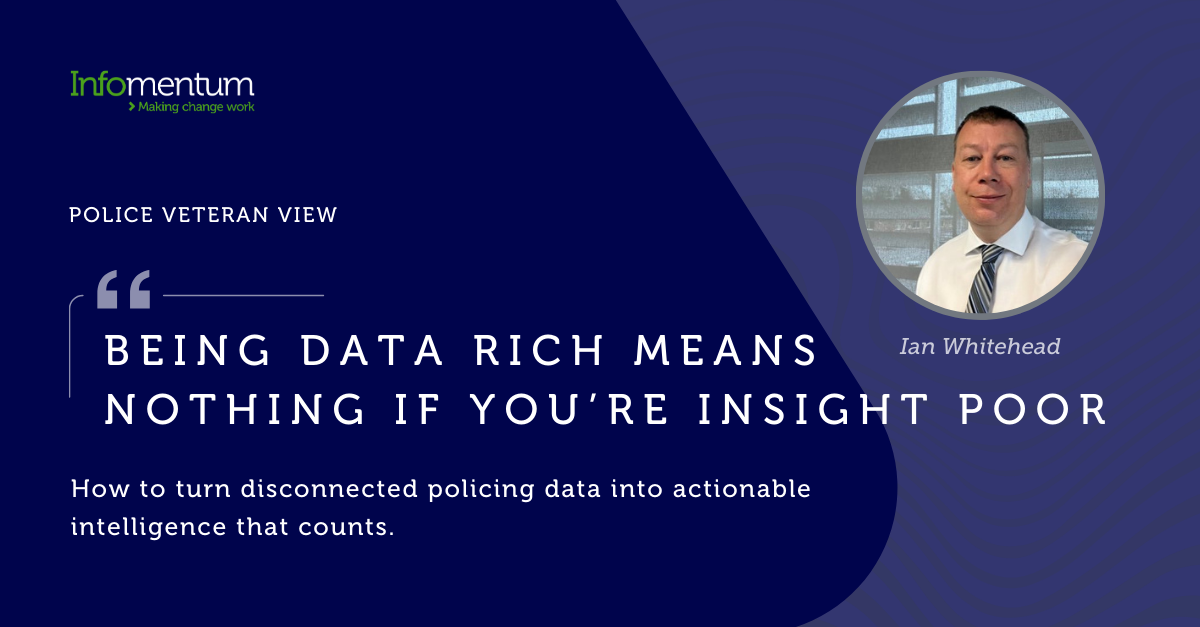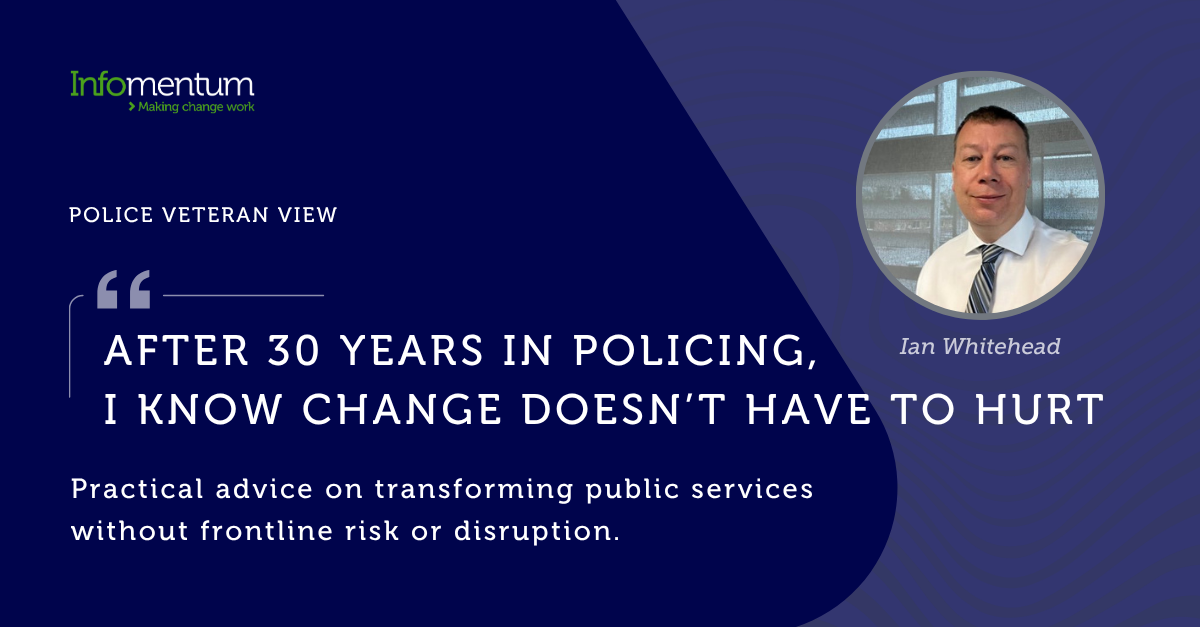After three decades in policing, including 15 years in senior leadership, I’ve seen first-hand the impact that legacy technology has on frontline delivery. It’s not just about systems that feel outdated or unintuitive. It’s about the deep-rooted inefficiencies and limitations that hold back people who are doing critical public service work.
In the last few years of my career, I had the opportunity to lead the digital strategy for the North West Regional Organised Crime Unit (NWROCU). The challenges were familiar: siloed systems that didn’t talk to each other, duplicated processes that drained time and energy, and data that was abundant but largely unusable. Our people were doing their best, but the technology simply wasn’t helping them do their job. We realised we had to stop trying to tweak around the edges. Business as usual wasn’t good enough. And more importantly, it didn’t need to be this way.
A systemic change
Many public sector leaders understand this reality all too well. Technology in policing - and the wider justice system - has traditionally been shaped by long procurement cycles, one-size-fits-all solutions, and vendors whose products evolve far slower than operational need.
That has left us with systems that are disconnected, unintuitive, and often inaccessible to those who need insight most. It’s not uncommon to find officers switching between multiple systems just to complete a single task, chasing information that should be surfaced automatically or manually processing data that could be handled with a click.
The result is more than inefficiency. It’s a quiet erosion of public confidence and staff morale. Because when technology gets in the way of outcomes - not behind them - everyone feels it.
What needs to change
What we need isn’t just new tools. It’s a new mindset.
Modern technology offers possibilities we couldn’t have imagined a decade ago: real-time data sharing, intelligent automation, and fully integrated platforms. These are not fringe ideas anymore. They're powering industries all around us - helping people do more, faster, and with better outcomes.
So, the question is: why shouldn’t the public sector benefit in the same way?
During my time at the NWROCU, we began exploring platforms that had transformed the private sector. That’s when I came across Salesforce. What struck me wasn’t just its capability, it was the flexibility to build solutions that worked the way we worked, not the other way around.
Our team used Salesforce to streamline investigations, reduce duplication, and bring data and insight together in ways that genuinely supported decision-making.
But this isn’t a story about one platform or one provider. It’s about the importance of looking beyond the traditional technology supply chain and asking: what would good look like if we designed it now?
The rise of the disruptors
Today, I’m working here at Infomentum, a technology consultancy that partners with public sector organisations to do exactly that - challenge assumptions and build smart, future-ready solutions. Our work is often in collaboration with Salesforce, leveraging industry leading technology to create real impact. We take the time to understand operational problems deeply, then help design solutions that solve them.
We’ve seen how introducing AI-powered technologies like Agentforce can simplify frontline work and unlock huge efficiencies. Our ability to integrate across legacy systems allows us to move at pace and deliver early value, and our data cloud solutions provide access to all your data without the need to build costly unmanageable data warehouses.
This isn’t about “rip and replace.” It’s about smart evolution: modernising where it counts, integrating what already works, and building capability for the long term. Our approach is agile: we work with you to build solutions which work for your organisation, and which are simple and cost effective to update, and adapt to your changing needs.
And perhaps most critically, it’s about trust. At Infomentum we have deep sector knowledge in policing and public service. We understand the complexity, the demands, and the need for pragmatism. That’s why we focus on co-creating solutions with our clients, not delivering products to them.
Lessons for leaders
Having worked on both sides of the fence, there are a few reflections I’d offer to any leader grappling with digital transformation today:
- Technology doesn’t need to be perfect – it needs to be useful.
Start with what will make people’s jobs easier and outcomes better. Then build from there. - The private sector isn’t ahead because it spends more – it spends smarter.
Low-code platforms, cloud-based services, and better data strategies all reduce complexity and cost. They’re not future ambitions – they’re available now. - Culture matters as much as code.
Any transformation is as much about mindset and leadership as it is about systems. Bring people with you. Listen, adapt, and show what good looks like. - Small suppliers can drive big change.
SMEs often bring agility, accountability, and a deeper investment in outcomes. Don’t underestimate their impact. - You don’t have to do it all at once.
The most successful change programmes I’ve seen start small, deliver fast, and build momentum. Focus on solving real problems, not ticking off procurement stages.
A call to think differently
There’s a quiet revolution happening in public sector technology, and it’s being led not by the biggest names, but by the boldest thinkers. Organisations are starting to ask better questions. They’re no longer accepting that slow, clunky systems are just the way things are.
As someone who spent a career trying to make policing better, I know how hard it is to carve out space for this kind of thinking. Operational pressures are relentless. But unless we make time to challenge how things are done, we risk locking the next generation into the same limitations we’ve lived with.
We don’t need to wait for better tools. We need to start using the ones already at our fingertips, and do so with purpose, partnership, and a renewed focus on the outcomes that matter most.
If you’re a leader wondering where to start, my advice is simple: ask what would be possible if your technology worked for you. Then find partners who can help you make it happen.
The opportunity is real - and it’s already here.







